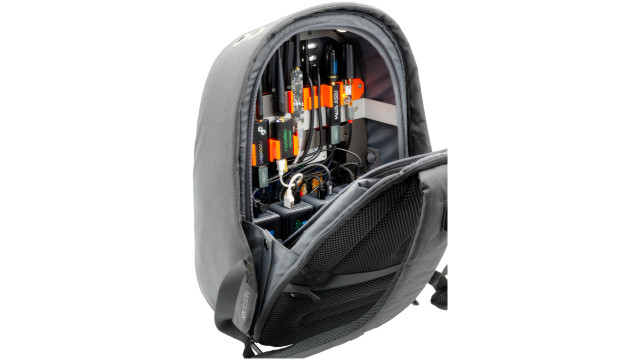What could be cooler than triggering actions with a mere wave of your hand? The Flick HAT allows you do this, and more. The Flick HAT is one of three new 3D gesture-tracking boards – there’s also a smaller Pi Zero version, and a larger stand-alone pre-soldered board with jumper leads to connect it to the Pi’s GPIO header.
The full article can be found in The MagPi 60 and was written by Phil King.
After securing the Flick HAT to the top of the Pi with the nylon nuts, bolts and spacers supplied, and then using a single-line installer for the software, it’s ready to use.
It’s a shame there are only three basic demos supplied, although a full Python API is in the works. The first demo shows the X, Y and Z values as you move your hand above the board, and it works best when you use a downward-pointing finger. While the blurb claims a vertical range of up to 15 cm, in our tests we typically achieved 5-7 cm. This distance will depend on the surroundings, and how conductive you are.
As well as tracking 3D positions, the board reads gestures including swipes (left-right and up-down), and ‘airwheel’, which involves rotating your finger in mid-air. This is ideal for an audio volume control, as used in the volctrl demo. Among many other uses, the swiping actions would be suitable for controlling a slideshow presentation – something we covered back in issue 39 using the rival Pimoroni Skywriter HAT.
The Skywriter and the Flick are based on the same MGC3130 3D tracking chip. Not surprisingly, their performance is very similar. The chip reads up to 200 positions per second, enabling it to reliably detect simple gestures. Like the Skywriter, the Flick also senses touch – in its centre and on the four edges – so it’s a versatile input device that could prove useful for countless projects.
Interestingly, it even works with the Skywriter Python library, from which the Flick library is derived. We were therefore able to use the Skywriter software examples, including a fun theremin synth.
One advantage of the Flick HAT is the availability of optional cases for all three models. The cases use a non-conductive surface, which does not interfere with the Flick’s ability to track gestures.
Last word
4/5
The performance of the Flick HAT is very similar to that of the Skywriter HAT, but the Flick offers an optional snug-fitting case, as do the other Flick models. Communicating with the Pi via I2C, the Flick only uses a small number of GPIO pins. With the ability to detect a wide range of gestures and touches, it would be a useful input device for many projects.








